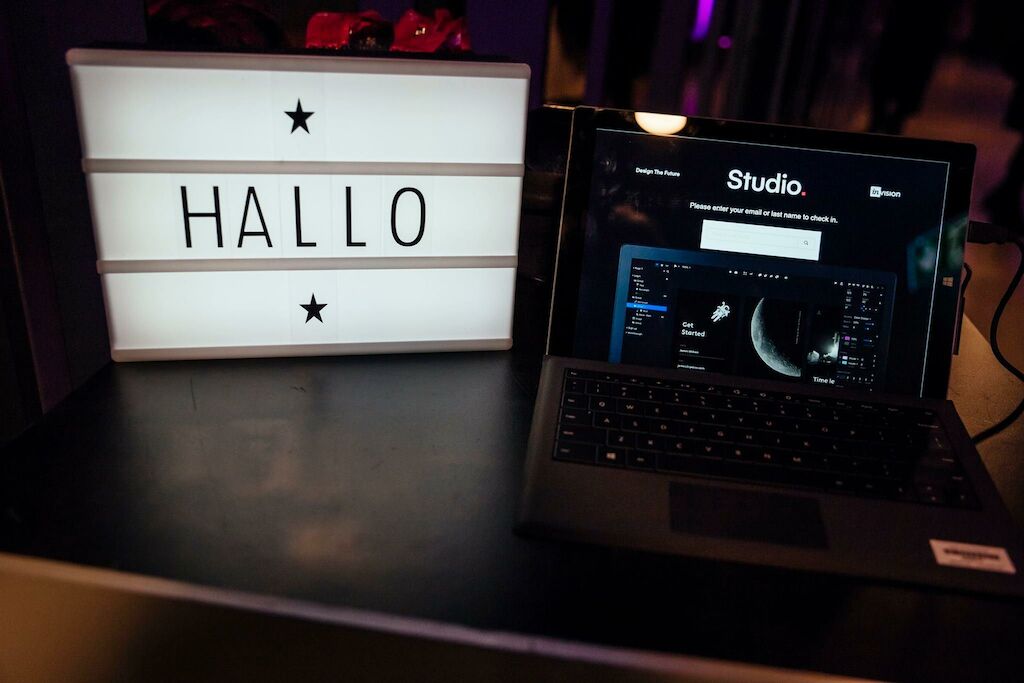The current design workflow is broken. It was with this premise that the InVision team set out to develop their new incarnation: InVision Studio. The tool was unveiled in October for a January 2018 release, and promised to be “The world’s most powerful design tool”. Can they deliver?
Too many tools!
The Berlin InVision Studio event opened with a series of statements. The one that really struck a cord read: “Too many tools. Just too many tools”. If you are a screen designer, or had to work on any web-based or app projects, you have probably encountered that same dilemma over and over again: which tool should I use?
A few years ago, the choice was fairly simple: the go to program was Photoshop. And though not perfect, Photoshop was the de-facto (and necessary) option for the workflow of every designer, and it had been so for many years prior. Then, things got a little more complicated.
For the past decade, as our jobs rapidly evolved, the demands from screen designers grew steadily, and so did the complexity of the designs. From responsive design to micro-animations, from different states for the same objects to complex interactions, the design flow became more and more multi-faceted.
This lead to an insurgence of various tools focused on solving the new problems that this design era brought – like the aforementioned InVision, a collaborative prototyping tool launched in 2011 and used currently by more than 3 million people – bringing many to leave Photoshop to what it was originally conceived and, to this day, great for: modifying photos.
A broken workflow
For the past 6 years, InVision has been growing its userbase by becoming the de-facto layer that sits on top of the design tool of choice. However, the main problem with this workflow, as described in an interview to TechCrunch by InVision founder and CEO Clark Valberg, is that it is basically broken. People create their designs, then upload them to InVision, and then use other tools to create more advanced animations, or manage their assets. It becomes a constant hopping from tool to tool, form file to file, just like Super Mario and his boxes. It’s quite exhausting.
The team at InVision recognized the problem, and for the past 2 years have been developing their very own Photoshop and Sketch competitor: InVision Studio. Could this finally the one tool that rules them all?
All in one
The premises are all there: Studio is built from the ground up with the new breed of screen designers in mind. The program promises to bring together not only a state-of-the-art platform for screen design, but also to incorporate InVision’s staple feature of rapid prototyping, with advanced animations, responsive layout, shared design systems, and seamless collaboration within teams. In addition, Studio will feature its own app and asset store, where developers and designers alike can build products and offer designs within the tool itself.
Demo + Drinks
On a chilly night of mid-november, my colleague Daniel Richter – who is Director Digital Consulting & Innovation at MetaDesign Berlin – and I were invited by InVision to the House of Weekend in Berlin, one of the stops of the company’s world tour, to get an early look at their product.
The first part of the 15-minute demo by Scott Savarie – product manager at InVision – showed the attendees the ease of switching back and forth from designing to prototyping, making quick changes to the design and seeing them reflected right away on the mockup. No dreaded “tool-hopping”, no jumping between various formats and unpronounceable file extensions.
The second part of the demo focused on animations, and this is where Studio really seemed to shine. Scott first quickly turned the classical hamburger menu into a close button in just a few clicks (with loud cheers from the audience), then moved on to showcase some more complex swipe asynchronous animations for a mock-application, all without ever leaving Studio. It looked quite remarkable and very easy to achieve.
At the end of the demo, we also had the rare chance to chat with some of the developers, and it was difficult not to feel their contagious enthusiasm for a project that they truly feel can be a breakthrough for screen designers worldwide.
One to rule them all?
Only time will tell if InVision Studio can accomplish all of their ambitious goals that they have set for themselves. From what we saw so far, they seem to be headed on the right path, and come January, we truly could be in for a revolutionary product in this overcrowded field.
_Alessandro Würgler is Digital Designer at MetaDesign Zürich.
InVision Studio will be available on January 2018 and be free for current InVision users on a paid plan.
